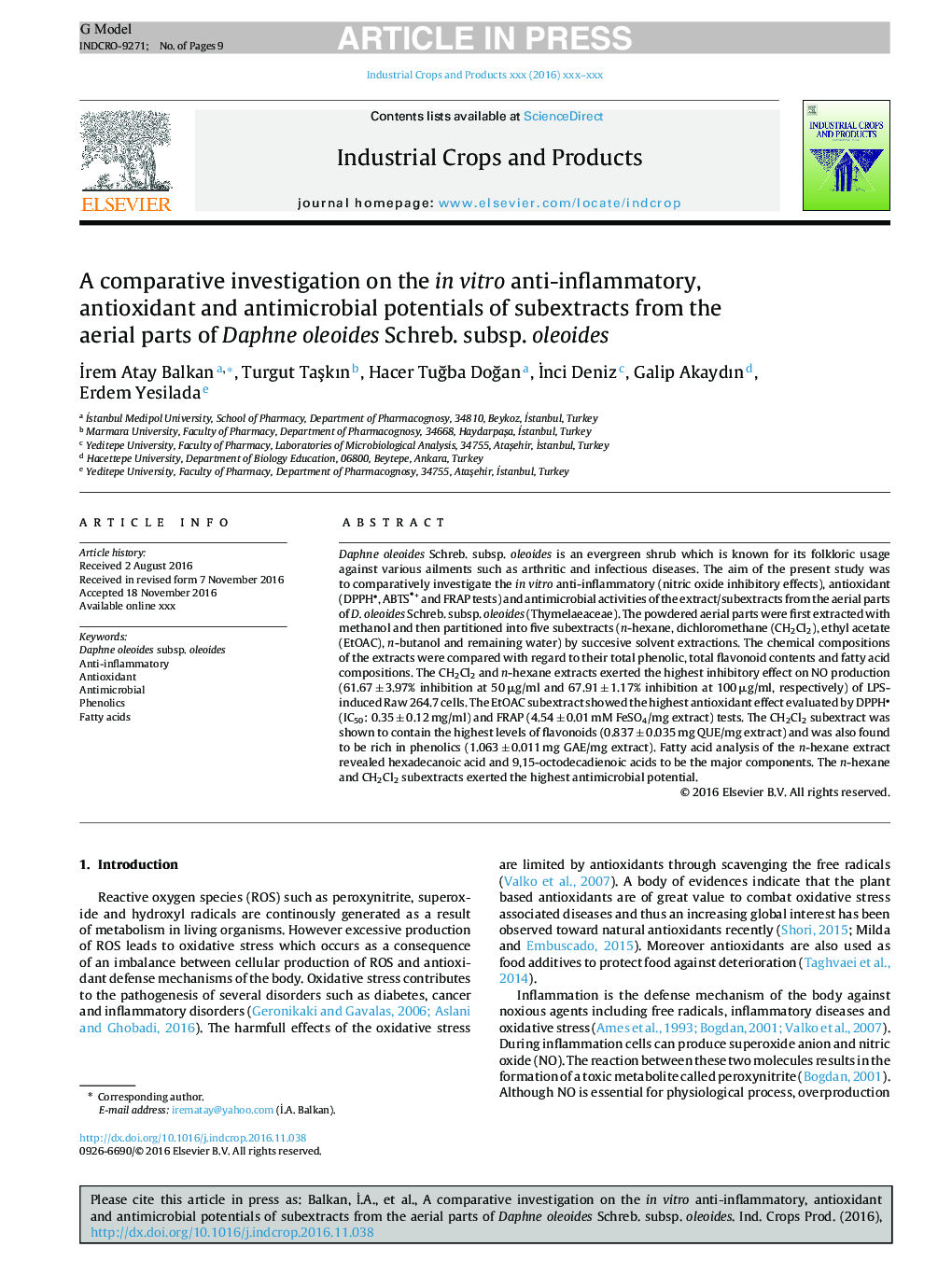| Article ID | Journal | Published Year | Pages | File Type |
|---|---|---|---|---|
| 8881078 | Industrial Crops and Products | 2017 | 9 Pages |
Abstract
Daphne oleoides Schreb. subsp. oleoides is an evergreen shrub which is known for its folkloric usage against various ailments such as arthritic and infectious diseases. The aim of the present study was to comparatively investigate the in vitro anti-inflammatory (nitric oxide inhibitory effects), antioxidant (DPPH, ABTS+ and FRAP tests) and antimicrobial activities of the extract/subextracts from the aerial parts of D. oleoides Schreb. subsp. oleoides (Thymelaeaceae). The powdered aerial parts were first extracted with methanol and then partitioned into five subextracts (n-hexane, dichloromethane (CH2Cl2), ethyl acetate (EtOAC), n-butanol and remaining water) by succesive solvent extractions. The chemical compositions of the extracts were compared with regard to their total phenolic, total flavonoid contents and fatty acid compositions. The CH2Cl2 and n-hexane extracts exerted the highest inhibitory effect on NO production (61.67 ± 3.97% inhibition at 50 μg/ml and 67.91 ± 1.17% inhibition at 100 μg/ml, respectively) of LPS-induced Raw 264.7 cells. The EtOAC subextract showed the highest antioxidant effect evaluated by DPPH (IC50: 0.35 ± 0.12 mg/ml) and FRAP (4.54 ± 0.01 mM FeSO4/mg extract) tests. The CH2Cl2 subextract was shown to contain the highest levels of flavonoids (0.837 ± 0.035 mg QUE/mg extract) and was also found to be rich in phenolics (1.063 ± 0.011 mg GAE/mg extract). Fatty acid analysis of the n-hexane extract revealed hexadecanoic acid and 9,15-octodecadienoic acids to be the major components. The n-hexane and CH2Cl2 subextracts exerted the highest antimicrobial potential.
Related Topics
Life Sciences
Agricultural and Biological Sciences
Agronomy and Crop Science
Authors
Ä°rem Atay Balkan, Turgut TaÅkın, Hacer TuÄba DoÄan, Ä°nci Deniz, Galip Akaydın, Erdem Yesilada,
